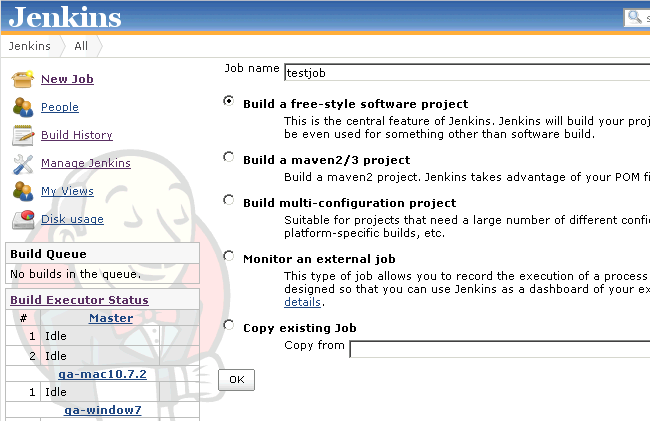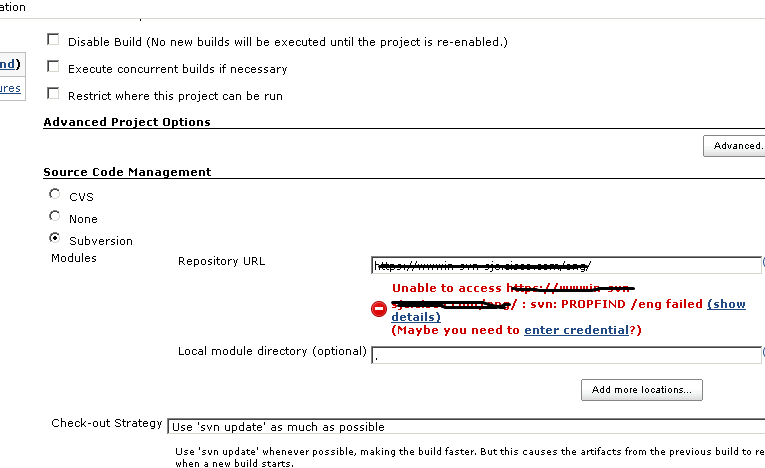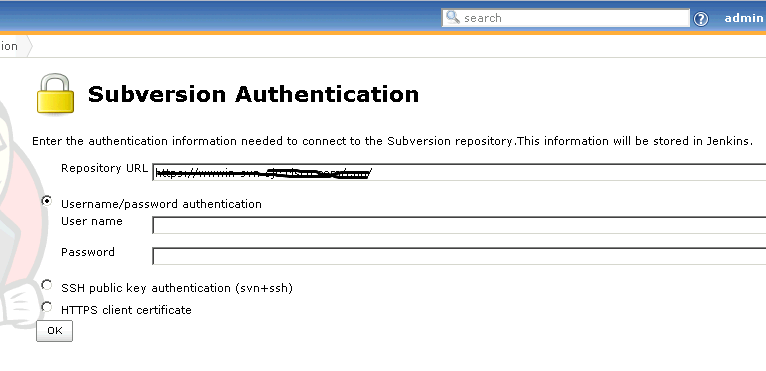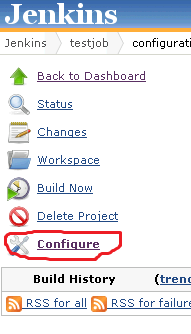标签:
官网首页(https://jenkins-ci.org/)就提供了windows版本的Jenkins安装包。可以自己下载一个用于学习。安装后自动打开http://localhost:8080,就可以看见Jenkins的界面。
要运行Jenkins的其它配置:
1,Jenkins是java程序,因此需要安装JDK。
2,同时运行job需要提供repository,也就是存放Jenkins定期poll源代码的地方。可以去github免费注册一个。
3,如果想在Jenkins中使用ant,maven等,则还需要单独安装。但不是必须的。
启动Jenkins
Jenkins天生支持unix-like system。
好吧,Jenkins是一个java程序,所以要运行它,只需要:
$ java -jar jenkins.war
我们也可以使用nohup命令,让Jenkins在后台运行。
之后打开URL http://myServer:8080 就可以方便的操作Jenkins了
官网给了一个sh的例子,用于启动Jenkins。可以参考一下。
Alternatively, if you have a servlet container that supports Servlet 2.4/JSP 2.0, such as Glassfish v2, Tomcat 5 (or any later versions), then you can run them as services, and deployjenkins.war as you would any other war file.
For example,
you could simply place the jenkins.war file in Tomcat’s webapps directory. 此时使用的URL默认就变成:
http://localhost:8080/jenkins
同时Jenkins提供一些默认不会启动的特殊的功能,参考下面的link来enable它们。
https://wiki.jenkins-ci.org/display/JENKINS/Features+controlled+by+system+properties
Jenkins的目录结构
和CruiseControler一样,Jenkins需要一个目录来存储相关文件:JENKINS_HOME。默认为 ~/.jenkins。即为user的home目录下的一个隐藏目录。我们也可以更改JENKINS_HOME,指向我们希望的地方。
(注意因为是隐藏目录,所以需要使用ls -al 才能看到)
JENKINS_HOME
+- config.xml (jenkins root configuration)
+- *.xml (other site-wide configuration files)
+- userContent (files in this directory will be served under your http://server/userContent/)
+- fingerprints (stores fingerprint records)
+- plugins (stores plugins)
+- jobs
+- [JOBNAME] (sub directory for each job)
+- config.xml (job configuration file)
+- workspace (working directory for the version control system)
+- latest (symbolic link to the last successful build)
+- builds
+- [BUILD_ID] (for each build)
+- build.xml (build result summary)
+- log (log file)
+- changelog.xml (change log)
如果有权限管理,则在HOME目录下还会有users目录。
从目录结构来看,和CruiseController非常相似。其中config.xml是Jenkins重要的配置文件。我们都知道Jenkins用于monitor多个build,而jobs这个目录无疑就是存储每个build相关信息的地方。
总的来说,Jenkins目录结构非常直白,简洁。
备份和恢复
备份和恢复非常简单,就是简单的copy Jenkins的目录就好了:
All the settings, build logs, artifact archives are stored under the JENKINS_HOME directory. Simply archive this directory to make a back up. Similarly, restoring the data is just replacing the contents of the JENKINS_HOME directory from a back up.
移动/拷贝/重命名 job
由于每个jobs都有自己单独的目录,我们可以很容易的:
1,move a job from one installation of Jenkins to another by simply copying the corresponding job directory.
,2,make a copy of an existing job by making a clone of a job directory by a different name.
3,rename an existing job by renaming a directory.
修改后执行下面的命令刷新:
http://[jenkins-server]/[command]
在这里[command]可以是:exit 退出,restart 重启, reload 重载。
创建一个Project
因为Jenkins可以用于运行各种CI,测试,批处理任务等等,所以在Jenkins中将这些任务统称为“free-style software project”.
Jenkins也提供了其他类型的jobs,例如:
1,如果项目是Maven,Jenkins还提供了一种仅用于Maven Project的job。但其实free-style software projec仍然可以用于创建Maven项目,只不过这种更适合Maven项目,结合的更好而已。
2,也可以创建一个"Monitor an external job“用于监控外部进程。
3,或者一个Matrix project,也就是multi-configuration project。
我不确定是否仅有这4种job,也许使用插件可以创建更多类型的job,大家自己看资料吧。
下面是如何创建一个最常见的“free-style software project"的过程:

ok确定

这之前有很多描述性的工作可以自己选择,配置svn要Subersion,在Repository URL中输入svn地址,点击enter credential

这里输入svn用户名和密码即可,在已建项目中可以点击Configure

自动运行Build
触发一个build有三种方式:
可以设置Jenkins定时检查SVN是否发生了变化,也可以手动检查:http://YOURHOST/jenkins/job/PROJECTNAME/pollong。也可以设置Jenkins为post-commit,这个方式尤其适用于那些检查是否代码改变会花费很长时间的情况。
http://YOURHOST/jenkins/job/PROJECTNAME/build
Distributed builds
Jenkins supports the "master/slave" mode, where the workload of building projects are delegated to multiple "slave" nodes, allowing single Jenkins installation to host a large number of projects, or provide different environments needed for builds/tests.
在现实中需要使用distributed builds情况很多,例如:一个web application的build,需要分别验证firefox和IE的行为,那么就需要到windows机器上运行IE。
或因为性能问题,将build分布到多个slave节点去。
到Jenkins的管理界面,就可以方便的添加节点。配置节点时,需要提供节点所在的机器,登陆用户名密码,使用的目录等。
但是slave并不需要再安装Jenkins。jenkins会自动启用slave agent,将build需要tools考到远程机器上。
需要注意的是:the build results and artifacts will always end up on the master server. 因此不需要跑到各个节点去查看build产生的文件,log等。
其实在slave节点,会创建一个本地的workspace,并在运行时使用这个workspace。因为毕竟build运行在slave节点上,所以这个节点肯定要有运行build需要的所有因素。
总之添加节点并远程运行build真是太方便了~
添加节点后,在master Jenkins home目录下会出现关于该节点的配置文件。
Jenkins将自动决定在哪个节点上运行build,根据下列策略:
Some slaves are faster, while others are slow. Some slaves are closer (network wise) to a master, others are far away. So doing a good build distribution is a challenge. Currently, Jenkins employs the following strategy:
Jenkins通过运行slave agents来完成分布式build。最常见的情况是:slave agent运行在各个slave 节点。master通过SSH远程启动/停止slave agent,进而控制各个节点的行为。
一共有下列4种方式启动slave agent:
•The master starts the slave agents via ssh
• Starting the slave agent manually using Java Web Start
• Installing the slave agent as a Window service
• Starting the slave agent directly from the command line on the slave machine from the command line
需要注意的是这4种方式适用于不同的情况,例如slave节点在防火墙后,导致master无法通过SSH启停slave agent。此时只能用后三种方式,但是往往有一些弊端,比如master无法自动停止/重启 slave agent.
一旦添加node成功,你就可以在job中指定这个job在哪个node运行:
Restrict where this project can be run (如果不指定则由Jenkins自行决定,即可以在slave节点运行,也可以在master节点运行,甚至在一次build中就可以自行来回切换)。
配置Jenkins,让它收集更多的log
https://wiki.jenkins-ci.org/display/JENKINS/Logging
在流行持续集成的今天,在各个环境:alpha,beta和production 都部署了唯一的Jenkins服务器。
Jenkins服务器统一负责该环境内所有组件的持续集成。也就是说,一个Jenkins服务器会有很多个build。所以有时会用到上面提到的”Monitor an external job“。
但不是Distributed Builds。
同时由于Jenkins会进入每个环境,包括production,因此会使用auto deployment的方式,自动完成Jenkins在各个环境的部署。
用户管理
毫无疑问Jenkins中需要有用户管理的功能,因为除开发人员外,有多种角色的人需要查看build的结果。
在Jenkins中的系统管理中,可以设置“任何用户可以做任何事” 或 “登录用户可以做任何事”。
因此前一个选项意味着,任何浏览JenkinsURL的用户都可以修改Jenkins。或只有登录用户才能做修改。
Jenkins中的用户划分为两类:可登录用户和不可登录用户。
1,只要是修改过repository,即对build产生过影响的用户,都会被Jenkins记录在本地的database中。这类用户可以在Jenkins界面->查看用户中浏览。
但这类用户不是正式的Jenkins用户,也不能登录Jenkins。这类用户的权限由上面说的系统管理中的配置决定。通常只有查看build的权限,没有修改权限。
2,只有在Jenkins中明确注册的用户,才能够登录Jenkins,并且有权限控制。同时注册过的用户,在JENKINS_HOME目录下的users目录下,都有一个单独的目录来存储相关信息。
Jenkins Script Console
Jenkins提供了一个script console Groovy script which allows to run arbitrary scripts on the Jenkins server or on slave nodes. This feature can be accessed from the "manage Jenkins" link。
也可以通过URL直接访问:http://myserver:8080/hudson/script
http://blog.csdn.net/tiangwan2011/article/details/7597080
Jenkins(二) 安装、新建Jobs与删除及SVN配置(转)
标签:
原文地址:http://www.cnblogs.com/softidea/p/5205880.html